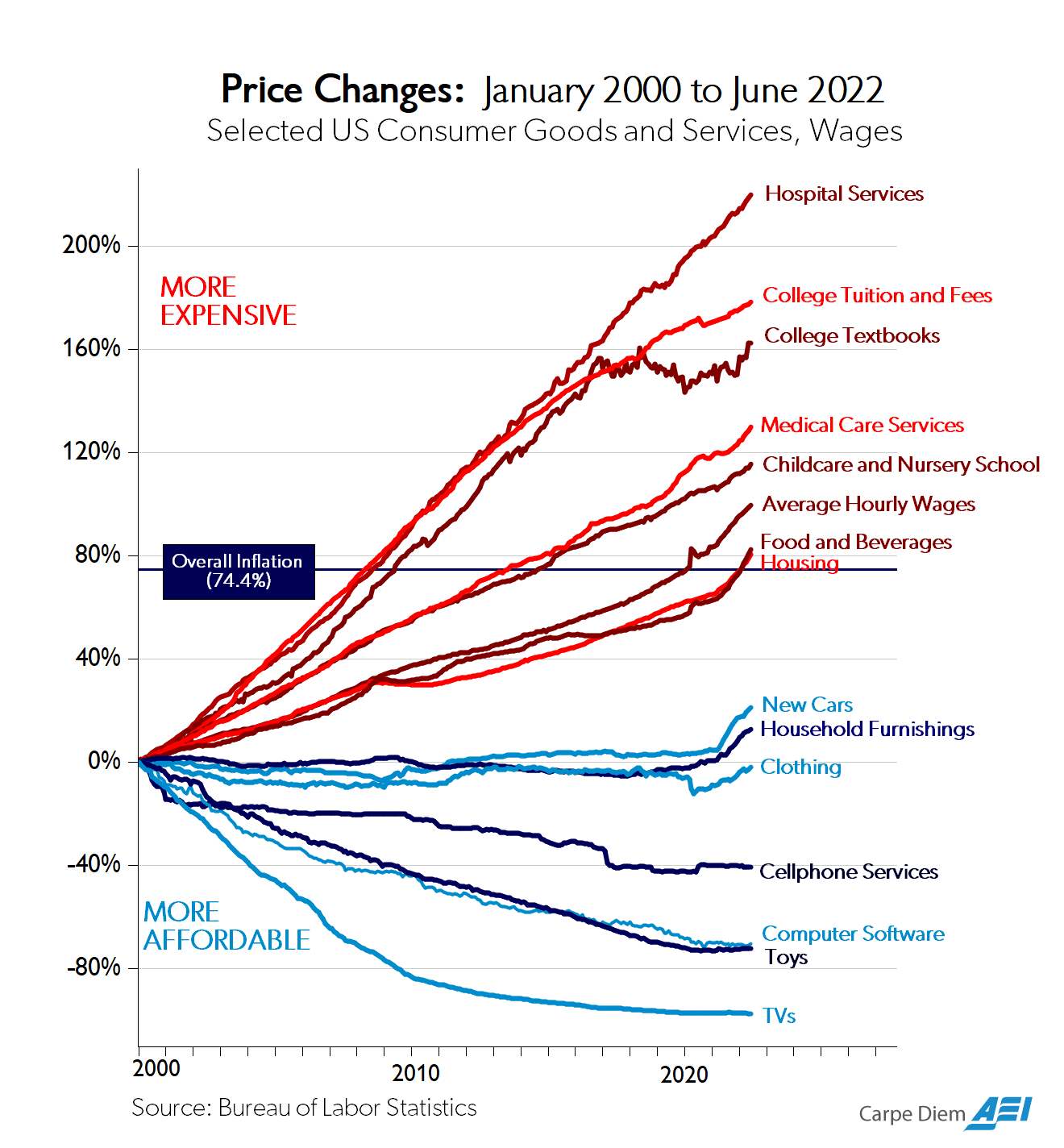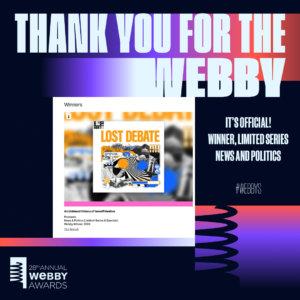In a spirited essay titled “Why AI will save the world,” the famed venture capitalist Marc Andreessen attempts to rouse us to a future tethered to artificial intelligence. We dissected this piece on a recent episode of Lost Debate. Our verdict: while brimming with provocative and fascinating arguments, Andreessen exaggerates his case while erecting and demolishing one straw man after another.
There was a passage from the piece that we didn’t have a chance to discuss on the show, one that merits special attention:
This is not to say that inequality is not an issue in our society. It is, it’s just not being driven by technology, it’s being driven by the reverse, by the sectors of the economy that are the most resistant to new technology, that have the most government intervention to prevent the adoption of new technology like AI – specifically housing, education, and health care. The actual risk of AI and inequality is not that AI will cause more inequality but rather that we will not allow AI to be used to reduce inequality.
Andreessen cites a piece from the American Enterprise Institute from a year ago that breaks out different sectors of our economy by inflation:

This chart has made the rounds on the internet, with the most common interpretation that the more regulated and government-dependent an industry, the more it’s prone to inflation. This dynamic certainly seems at play in higher education, something I wrote about a year ago concerning student debt:
Government created this crisis; government should solve it. “Government has been acting like a predatory lender,” argued Slate’s Jordan Weissman on a recent episode of the Plain English podcast. “They give out loans indiscriminately, they don’t check credit scores, and they don’t even ask questions about the kinds of schools you’re going to.” Borrowers from for-profit colleges hold on average 40% more debt and are twice as likely to default. The government has made it as easy as possible for these for-profits to prey on vulnerable customers and has done next to nothing to control costs or discriminate on the basis of quality of program or major. This dynamic is also at play in non-profit and public colleges as well, where, as Dominic Pino and many others have argued, the government restricted supply (making it hard to start a university) while manufacturing demand. To make matters worse, the government also makes it extremely difficult to discharge student loan debt in bankruptcy.
According to Andreessen, there’s something deeper going on. He argues that government involvement is negatively correlated with technological adoption:
The sectors in red are heavily regulated and controlled and bottlenecked by the government and by those industries themselves. Those industries are monopolies, oligopolies, and cartels, with extensive formal government regulation as well as regulatory capture, price fixing, Soviet style price setting, occupational licensing, and every other barrier to improvement and change you can possibly imagine. Technological innovation in those sectors is virtually forbidden now. Whereas the sectors in blue are less regulated, technology whips through them, pushing down prices and raising quality every year.
As someone who spent years battling with my local school district over Byzantine technology procurement policies (among other sins, they forced me to use clunky Pearson data and assessment tools, even as a charter), I am somewhat sympathetic to what Andreessen argues. Traditional public schools are often handcuffed by bureaucracy — or downright resistant to new technology (as evidenced by New York City’s ban on the use of AI).
Yet even at the K-12 level, where the technological blockages are real, many teachers and schools ignore their districts and use whatever software tools they find helpful — something made possible due to the proliferation of student laptops.
However, Andreessen’s argument becomes less persuasive regarding higher education, which is the sector that dominates the “red” portion of the graph he cites. Is the problem with college a technological one? Is innovation at the post-secondary level indeed “virtually forbidden”?
Elite colleges for years have been putting their content on the internet for free. I even interviewed someone recently who reconstructed an entire MIT degree at home using online materials. With few exceptions, you can find high-quality lectures, assessments, and other adaptive learning materials on any subject. You can even find expert coaching and tutoring if you are willing to pay a bit. As Andreessen himself points out, AI will only make those tools more effective.
As Scott Galloway and others have pointed out, the problem with universities is largely in their credentialing power and elite networking. The technology is already there to scale Harvard’s instruction to millions, but the university is incentivized to keep its degrees scarce. A kid in Bangladesh can learn about philosophy from Michael Sandel, but she won’t be able to brush shoulders with the world’s elite or earn a degree that an employer would recognize. We don’t need new software or machine learning to solve that. In fact, the government (through the coercive power of the purse) may be the only entity that can force elite programs to serve more students. Sure, the government can and should weaken certain licensing rules, but that would do next to nothing to solve for the scarcity of degrees in certain elite professions that don’t require licenses.
In this sense, as it relates to post-secondary education, the solution may be the opposite of what Andreessen proposes. We may actually need more robust government intervention.




